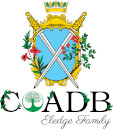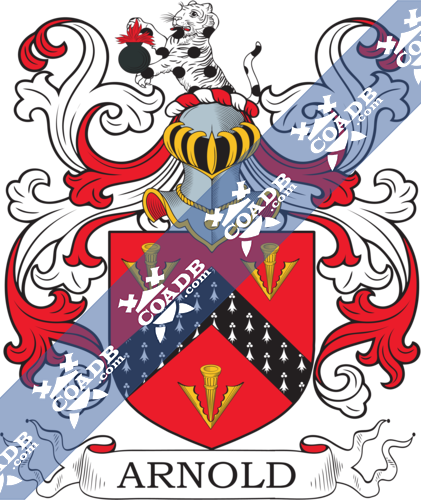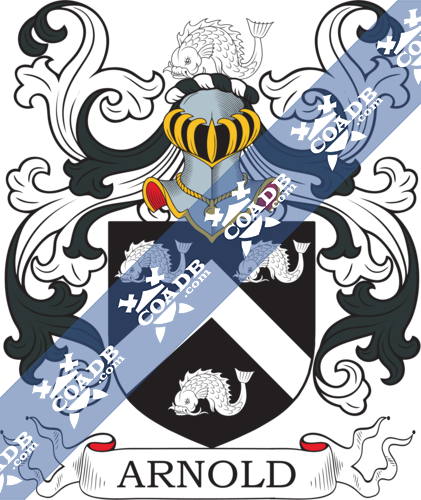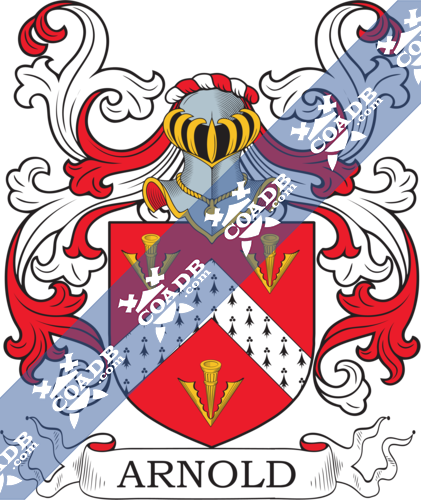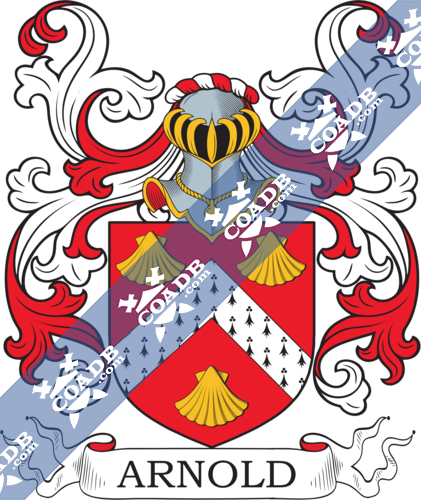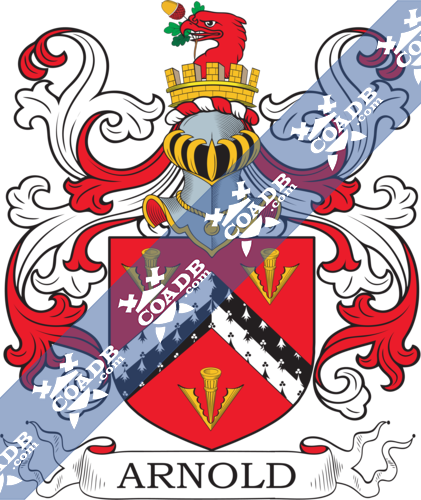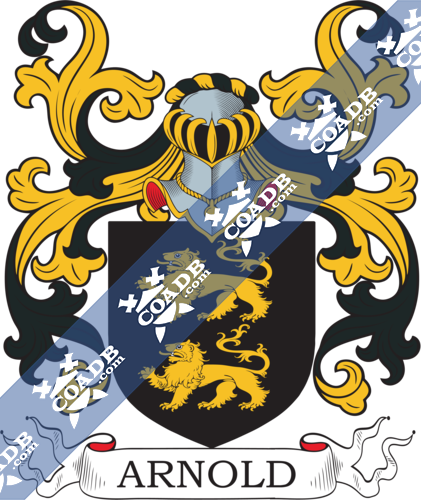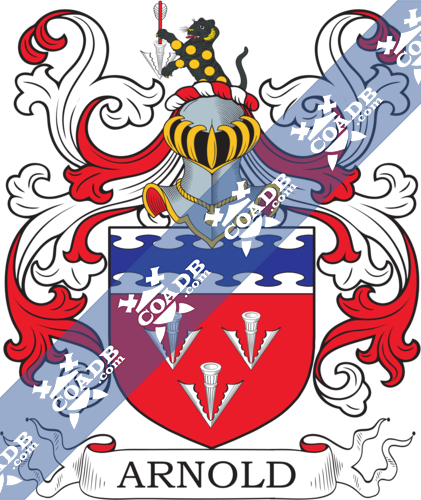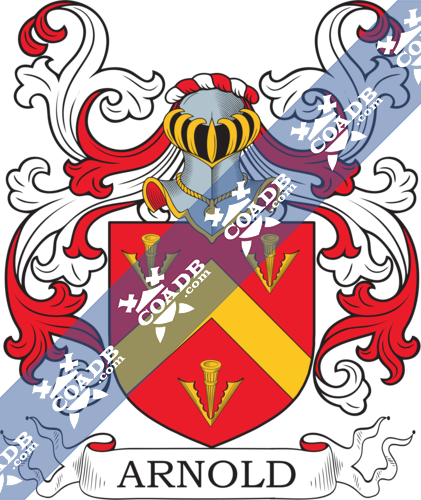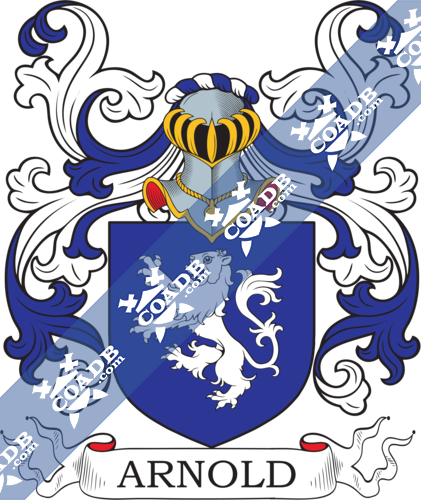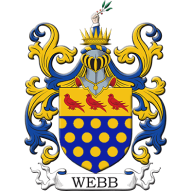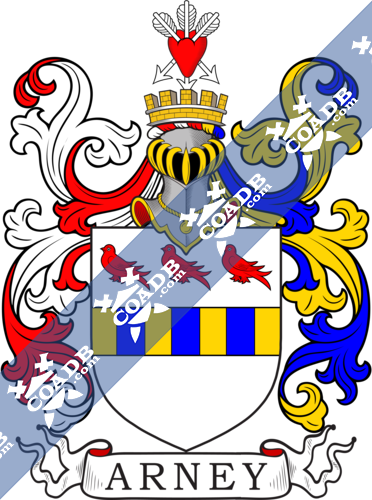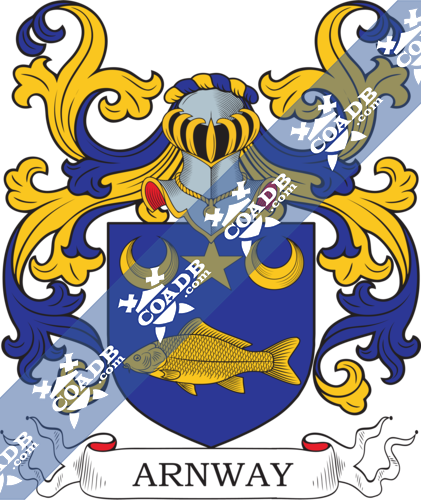Arnold Family Crest, Coat of Arms and Name History
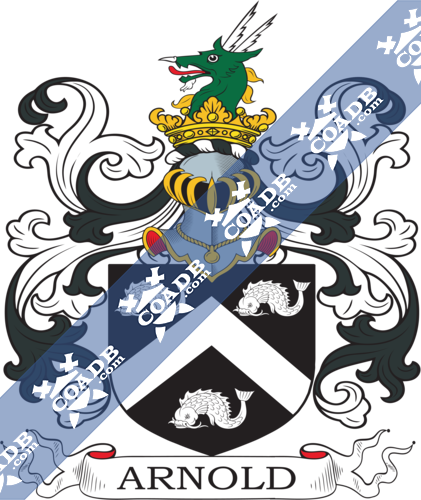
Arnold Coat of Arms Gallery
Don’t know which Coat of Arms is yours?
We can do a genealogical research. Find out the exact history of your family!
Learn MoreArnold Origin:
Germany, England
Origins of Arnold:
The surname of Arnold is said to have been prominent in the German and English cultures, from which it originated. This surname is said to have derived from the personal names of Ernault or Arnolt, both of which have compounded separate elements. Both of these personal given names are composed of the element “arn” which can be translated to mean “an eagle” and the element of “wald” which can be translated to mean “to rule.” This surname of Arnold is also possibly a locational surname. This means that it was often taken by the Lord or owner of the land from which the name derives. Others who may have take a locational surname are people who have migrated out of the area to seek out work. The easiest way to identify someone who was a stranger at that time was by the name of their birthplace. The locations from which this surname is possibly derived include the English village of Arnold in East Riding of Yorkshire, and the other village named Arnold in Nottinghamshire.
Variations:
More common variations are: Arnould, Arnot, Arnott, Yarnold, Arnoldi, Arnhold, Arnoldo, Arnoldy, Arnolda
History:
England:
The first recorded spelling of the surname of Arnold is found within the country of England. One person by the name of William Arnold, who was mentioned as living in the county of Suffolk in the year 1277. This record was created under the reign of one King Edward I of England, who was known throughout the ages as “Edward Longshanks,” and also as “The Hammer of the Scots.” King Edward I was such named for the many brutal wars and conquests that he waged on Scotland during his reign. King Edward I ruled from the year 1272 to the year 1307. Those who bear the surname of Arnold within the country of England can be found in high concentrations in the areas of Yorkshire, into Lancashire, Essex, Kent, Sussex, and Middlesex counties, as well as the areas in and around the city of London.
Germany:
The first recorded spelling of the surname of Arnold within the country of Germany can be found in the year 1282. One person by the name of Adler Arnold was recorded as living in the area of Meskirch in the year of 1282.
Scotland:
Within the country of Scotland, there are many people who bear the surname of Arnold. The areas with the largest populations of people who carry this surname include many areas throughout the southwestern area of the country of Scotland. The counties with the highest concentrations of people who are known by the surname of Arnold include Ayrshire, Dumfries-shire, and Lanarkshire counties.
United States of America:
Throughout the 17th Century, many European citizens migrated to the United States of America. This movement, which was referred to as The European Migration, was the result of disgruntled European citizens, and the living conditions that they encountered. Those who migrated to the United States of America with the surname of Arnold can be found in high concentrations in the states of Georgia, Iowa, Wisconsin, New York, Washington, Ohio, Texas, Illinois, Pennsylvania, New Jersey, California, Missouri, and Kentucky.
Here is the population distribution of the last name Arnold: United States 158,728; England 24,016; Uganda 16,990; Australia 10,910; South Africa 10,283; Canada 9,044; Nigeria 5,808; France 5,756; Switzerland 5,591; Brazil 5,199
Notable People:
Edward Zachery Arnold, who was a politician from America and who was also the Georgia State Auditor from the year 1938 to the year 1941
Zach Arnold, who was Democratic politician from America who was a Georgia delegate to the Democratic National Convention for the year 1940
Willian Wright Arnold (1877-1957) who was a Democratic Politician from America, who was also the Illinois 23rd District Representative to the United States House of Representatives from the year 1923 to the year 1935
William R. Arnold, who was a politician from America, and who also was a Bishop, and the United States Army Chief of Chaplains, as well as a speaker for the Democratic National Convention in the year of 1948
William Hendrick Arnold (born in 1861) who was a Democratic politician from America who was also a Delegate to the Democratic National Convention in the year 1892 as well as the year 1904 and the year 1916
William Charlie Arnold (1851-1906) who was a Republican politician from American, and who was also a Representative for Pennsylvania in the 28th District to the United States House of Representatives
Blazons & Genealogy Notes
1) (Devonshire). Sa a chev. betw. three dolphins embowed ar. Crest—Out of a ducal coronet an antelope’s head.
2) (Cromer, co. Norfolk and Ballesford, co. Suffolk). Arms the same. Crest—A dolphin embowed ar.
3) (Gloucestershire, granted 1653). Gu. a chev. erm, betw. three pheons or.
4) (Gloucestershire). Gu. a chev. erm. betw. three escallop shells or.
5) (Chilwick, co. Hertford). Gu. a chev. quarterly erm. and ermines, betw. three pheons or. Crest—An eagle’s head erased gu. gorged with a mural coronet ar. holding in the beak an acorn, slipped, leaved vert.
6) (Huntingdonshire). Sa. two lions pass. or.
7) (London, granted 31 December, 1612). (Little Missenden Abbey, co. Bucks). Gu. three pheons ar. on a chief of the second a bar nebulee az. Crest—A demi tiger sa. bezants, maned and tufted or, holding a broad arrow shaft gu. feathers and pheon ar.
8) Gu. a chev. betw. three pheons or.
9) Az. a lion ramp. ar.
10) Gu. a chev. ermines betw. three pheons or. Crest—A demi tiger ar. pellettee betw. the paws a fire-ball sa.
